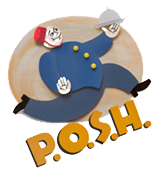Antique Meissen Blue Onion Bread Plates - Set of 6
Antique Meissen Blue Onion Bread Plates - Set of 6
SOLD
A truly beautiful set, these antique Meissen bread plates are certain to stun on any table, a charming creation from Ernest Teichert - Colin Meissen (mark impressed under glaze), one of the esteemed companies that would produce patterns based on the imperial Meissen factory designs.
In the beautiful "Blue Onion" pattern, the plates are rich in intricate details. Entirely hand-painted, the plates are in Blue Onion's traditional deep cobalt palette using the underglaze techniques that Meissen perfected in the early 1700s when they became the first in Europe to use this once-secret art of white porcelain wares. The beloved Blue Onion pattern features stylized fruits and florals to create a design that imitated the highly prized blue and white porcelain imported to Europe from China since the 13th century.
A gorgeous set with timeless appeal, these rare bread plates showcase Meissen's unrivaled artistic porcelain mastery.
Strictly one-of-a-kind and subject to prior sale. In very good antique condition. Plates measure 6"D.
Learn More About the Blue Onion Pattern
The Meissen “Blue Onion,” or Zwiebelmuster, pattern was first produced in the early 1740s and was modeled after the imported blue and white porcelain produced in China. A close look at pieces from this line reveal that no onions actually appear in the design. Rather, to give the pattern its own Germanic style, Meissen’s designers refined the cobalt blue decorative motifs to include flora more characteristic of the European landscape, such as peony and aster blooms. Despite this misnomer, Meissen’s Blue Onion pattern rapidly became one of its most popular and copied. Even the famed Wedgwood studios launched their own variation, aptly called “Meissen,” in the late 19th century.
Learn More About European Porcelain
Seemingly available cheaply everywhere and taken for granted today, objects made out of porcelain were once rare and precious things to Europeans. Since the time of the Tang dynasty (618-907) only the Chinese knew the process of mixing ground petuntse (a type of low-iron volcanic stone) with kaolin (a hydrated aluminum silicate crystalline mineral clay), and firing at high temperatures to produce items prized for their strength, translucence, and pure white color. Porcelain was so associated with its origin, that the type of ceramic came to be known simply as “china.”
By the 13th century, porcelain imported from China was highly prized in the royal courts of Europe. The versatility and hardness of the material allowed for lighter, thinner, more elegant wares than did contemporary European pottery, but the lengthy and dangerous journey from China to Europe made these wares extravagantly expensive.
By the early 18th century most of Europe’s courts were attempting to copy China’s porcelain, but it was the alchemist Johann Friedrich Böttger who first succeeded in Meissen in 1708 under commission from the royal court of Saxony.
The German manufactories in Meissen and Dresden began production in 1710, and over the rest of the eighteenth century porcelain manufacture spread over the rest of Europe.










